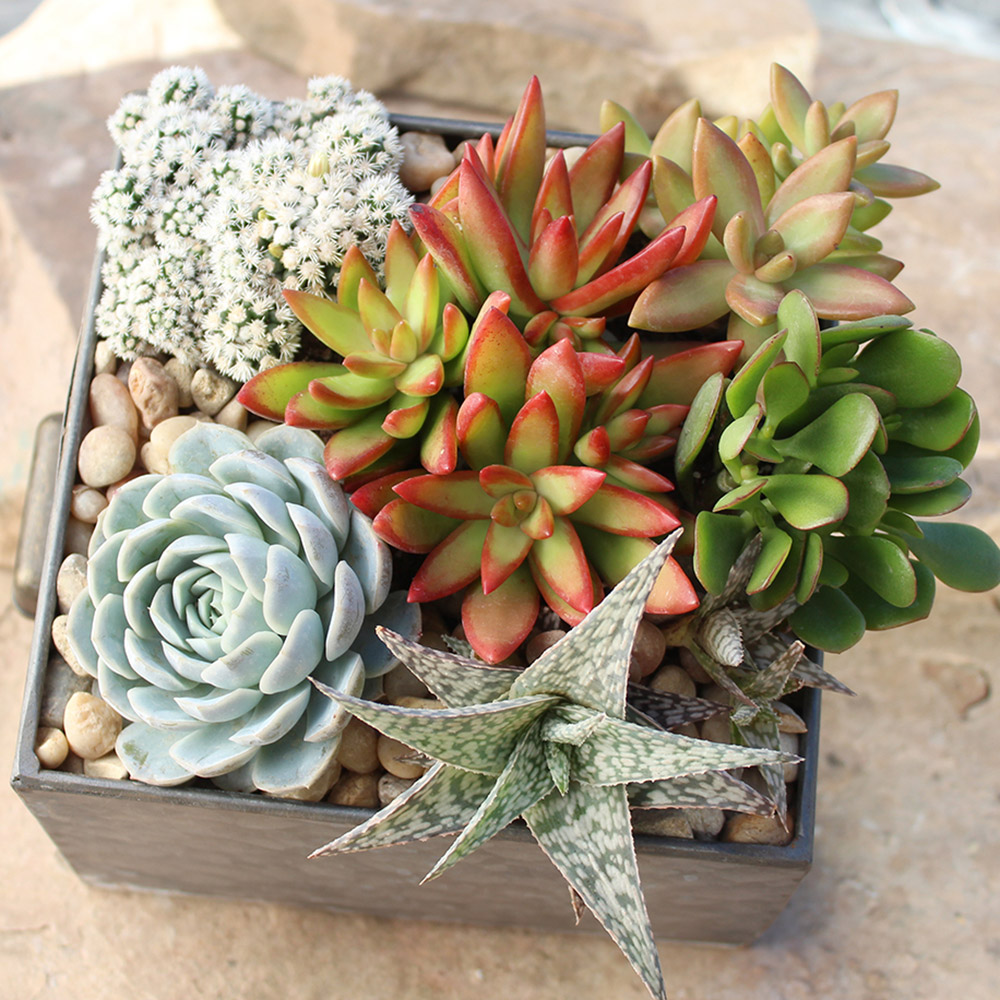
You’ll want to bookmark this guide on how to identify and fix common problems with succulents. Because let’s face it, at one time or another, most of us have found it difficult to keep succulent plants alive.
It’s hard not to fall for succulents with their various shapes, colors and sizes. These social media darlings look beautiful in photos and in our homes and offices. These beauties still need care, even though we sometimes forget, or get busy with travel away from home. That’s also the beauty of succulents. They can go long periods without watering.
Get Expert Advice

Still, succulents can encounter problems. We asked gardening and succulent experts John Bagnasco and Bob Reidmuller, authors of “Success with Succulents: Choosing, Growing, and Caring for Cactuses and Other Succulents,” (Cool Springs Press) how to identify and fix common succculent problems.
Bagnasco, also author of “Planting Designs for Cactus & Succulents: Indoor and Outdoor Projects for Unique, Easy-Care Plants–in All Climates,” (Cool Springs Press) is president and co-host of the nationally syndicated Garden America Radio Show, a program that reaches 1.1 million listeners every weekend. Reidmuller is resident horticulturist with Altman Plants, the nation’s largest wholesale producer of cactuses and succulents, and supplies The Home Depot's Garden Centers.
Overwatered Succulent
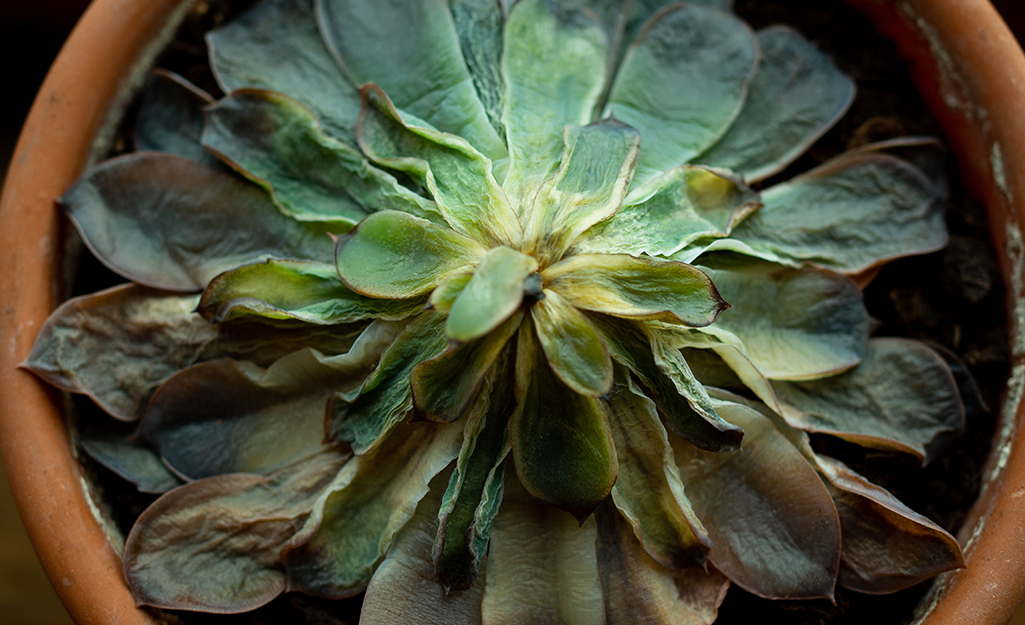
If the plant leaves are mushy, you have an overwatered plant and should stop watering. The best prevention against overwatering is to make sure there's adequate drainage in the pot.
Save your overwatered succulent by laying the pot on its side and letting all the water drain out of the pot for a few days. If you notice your succulent is getting worse, pull it out of the pot with the soil ball and let it dry for a few days. If that doesn’t seem to help, rinse the soil off the root and let the succulent sit out to dry for a week in the sun to give it a chance to heal. Then, you can replant. If you haven’t killed it to the core, give it a reasonable watering.
In general, succulents use more moisture during growing periods, and the majority of succulents do most of their growing in spring and summer.
Tip: Use a chopstick, considered a makeshift soil moisture meter, to determine if your succulents need to be watered. Read on to learn more about this method. Another soil moisture method is the flat Mexican beach pebble. Place it on the soil and leave it laying flat on the soil surface. Any moisture will collect on the bottom and it will look darker if it’s moist on the bottom. If it is moist, your succulent doesn’t need to be watered.
Under-Watered Succulent
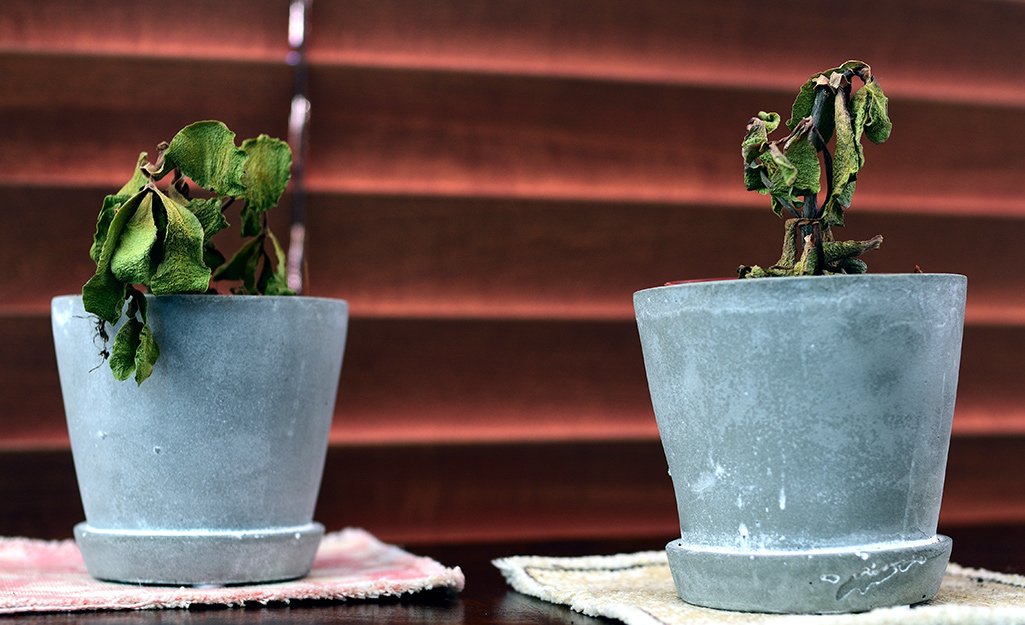
Succulents can go an exceedingly long period of time and still be okay without water. But there does come a point where, if you let the plant go too long without water, there’s no moisture to keep them plump and alive. When this happens, the roots collapse and when you do water the plant, the roots can't function and the succulent plant rots.
That’s where the chopstick method comes in handy. If the chopstick in your plant is slightly damp 2/3 of the way down or bone dry to the bottom, then you can water at that point.
Tip: Get two identical succulents and alternate those in your decorating scheme. Keep one inside and the other outside. Every other week (during warm weather growing season) rotate your succulents so they always look fresh and not stressed.
Brown Spots
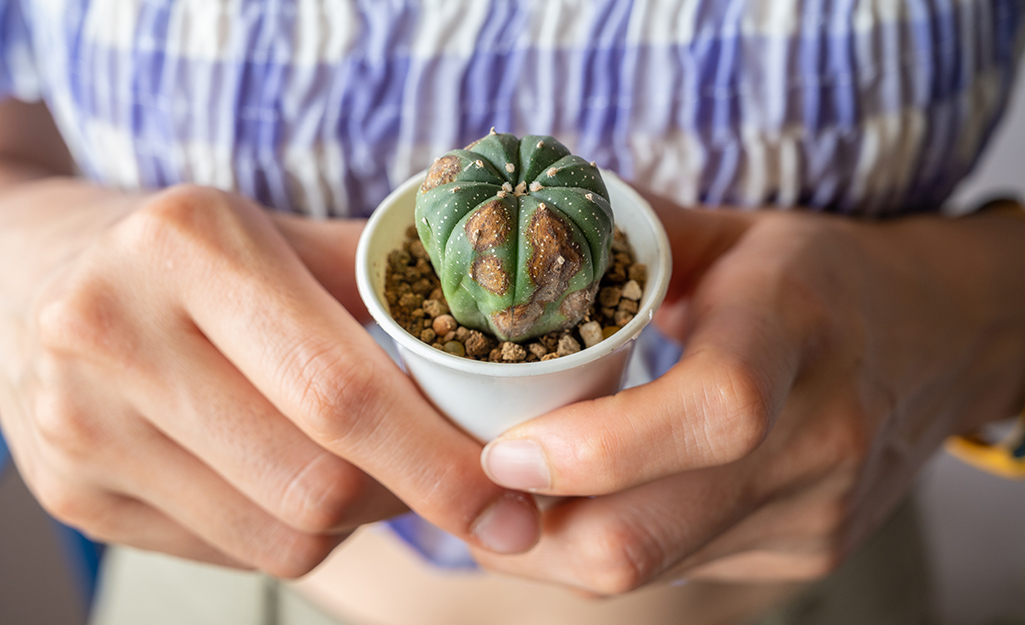
Sun scalding, also called succulent sunburn, causes large burned spots or a patch. That’s permanent damage and can’t be corrected. It’s a common occurrence when you move plants from indoors to outdoors and think the succulent (or cactus) can be in direct sun after being indoors after a few months. It’s like introducing your skin to sun without sunscreen. That’s when you need to let your plant adjust by giving it indirect or morning sun for a time.
There’s also freeze damage. Usually, this turns your plant to mush.
Then there’s insects such as scale, that appear as brown spots, and can be treated using a cotton swab dipped in rubbing alcohol. Just swab the plant and rub off the scale insects.
Fungal rot also causes brown spots. Usually these are from a secondary effect of overwatering causing edema, or water retention, in the plant tissue. Cells explode and cause pockmarking.
Leaves Turning Black
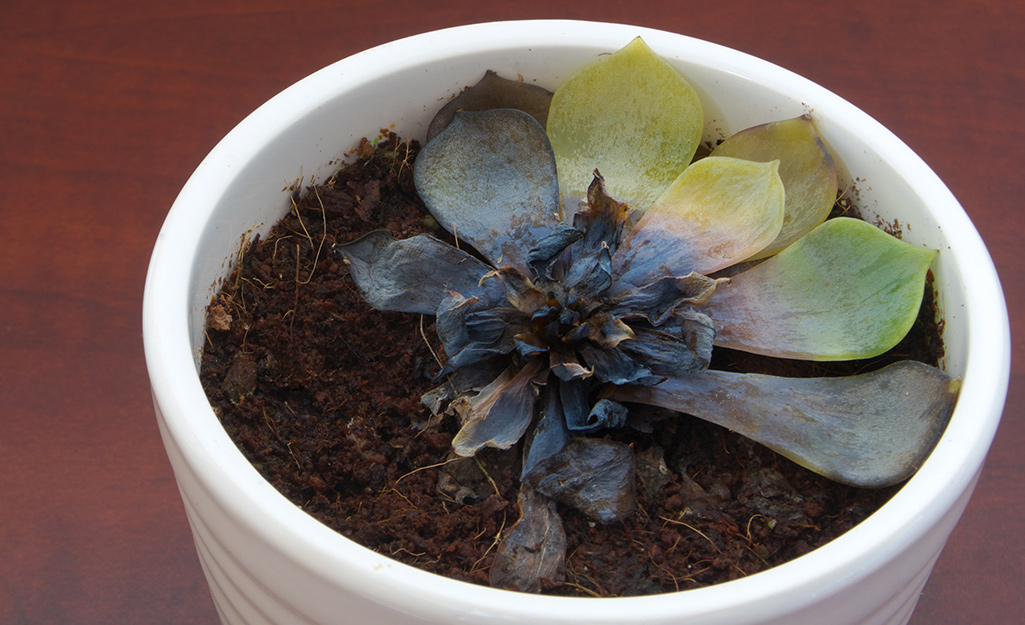
It's normal for the oldest leaves on the bottom of succulent plants to turn black, or brown, and dry out.
Other than that, anytime you see black, it’s not good on any plant. Sometimes you can come back from it, but other times you cannot. It could be a hidden problem, such as overwatering. If the darkness is farther up the plant, it’s usually not a good sign, indicating that the rotting is creeping up through the plant. If that’s the case, use the overwatering tips above.
Rotten Stem
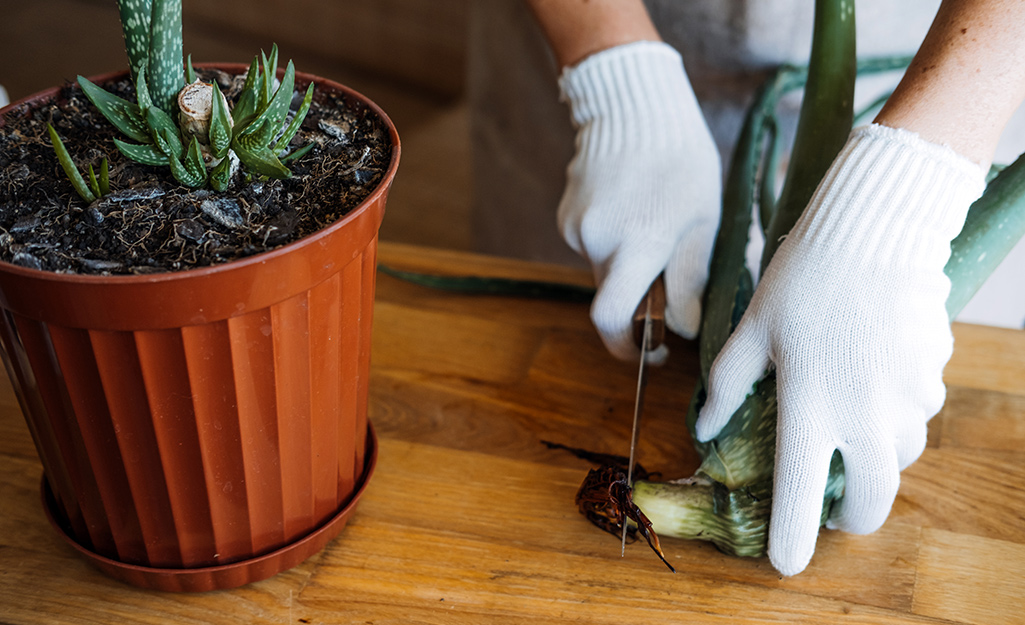
For this one, it depends on the type of succulent. Typically, you can snip off above the rot where the plant collapsed and reroot the top. If the leaves have not started to rot, you have recourse there, too. You can pull them off and make new plants.
Just let your succulent stems or leaves dry out and callus for three to five days first before planting again in fresh succulent potting soil.
Drooping Leaves
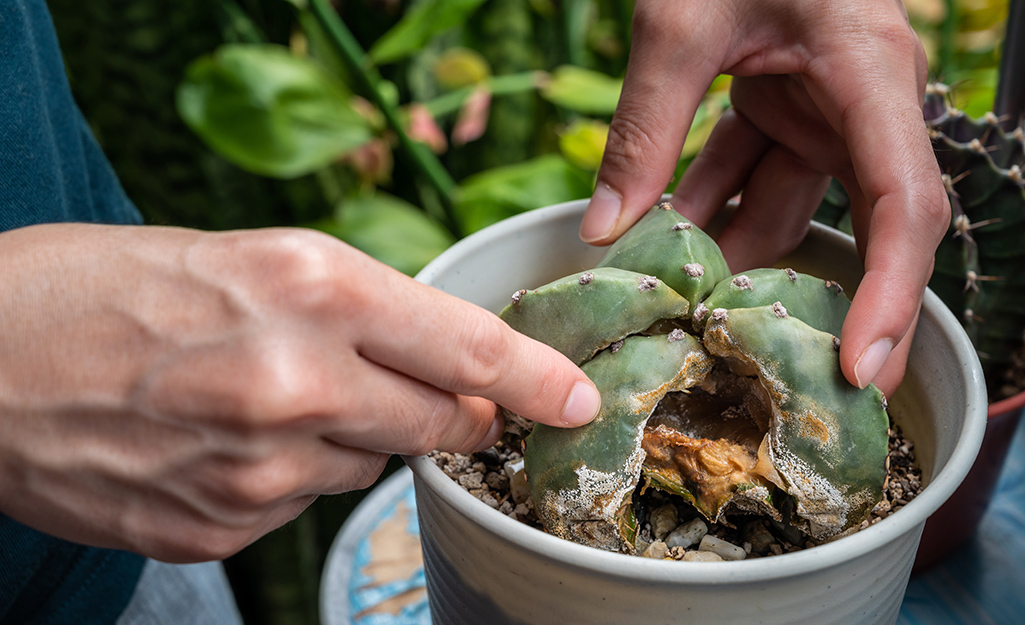
It can sometimes be difficult to diagnose plants that are under watered, overwatered or where rot is starting. The majority of the problems with succulents are caused by overwatering.
However, in the case of the drooping plant pictured above, this succulent needs to be repotted, pruned of its lower leaves and watered. Let the soil thoroughly dry in between waterings.
Succulent Plant Pups
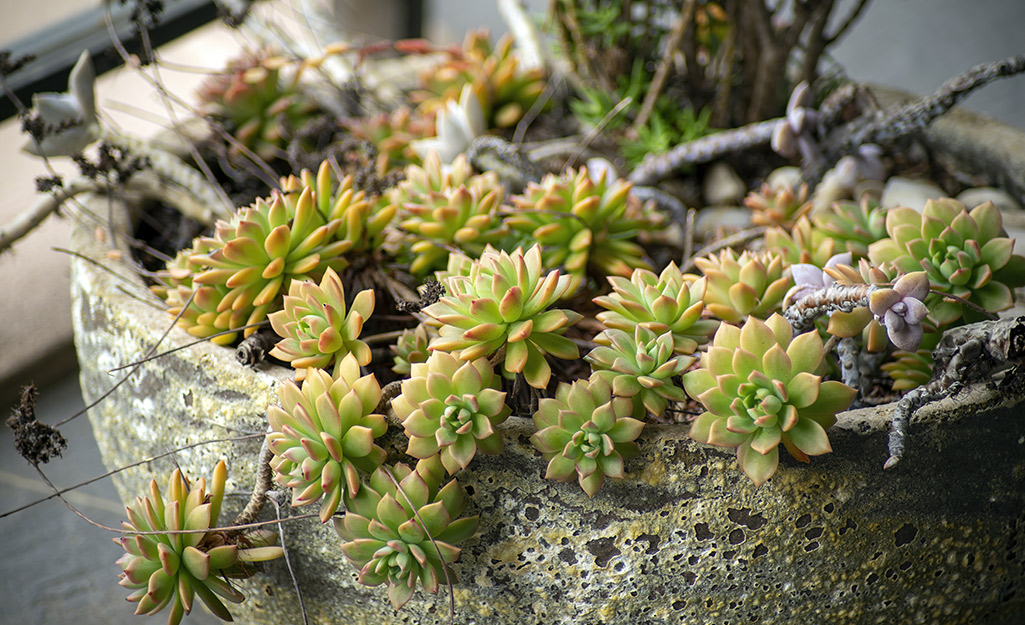
Echeveria pups form around the base of the succulent. Snip them off close to the parent plant and let the new plants sit around for a week to dry before you plant them in new flowerpots.
Kalanchoe forms full grown little plants that fall down and root again. They wind up in every pot of everything you have. Just dig them up and put them in pots of their own. That’s how kalanchoe earned its nickname “mother of thousands.”
These free plants can be shared with others, or save them for your collection. Watch this video and learn how to propagate succulents.
Tall, Thin and Stretched Growth
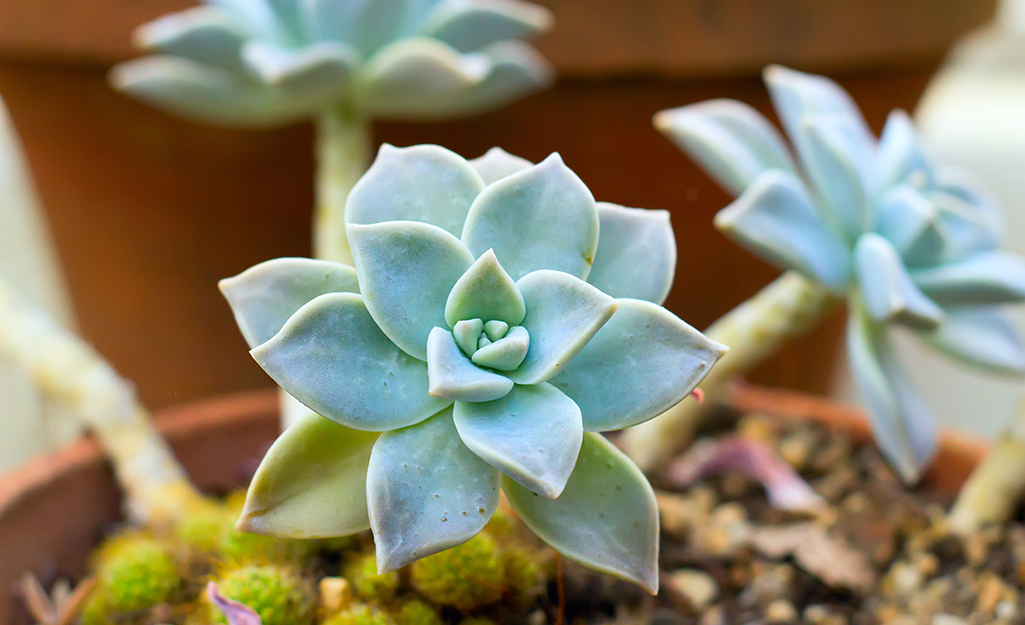
When you see succulents with etiolated growth, or are tall, thin and stretched looking, it’s a very serious problem. Your plant doesn’t get enough sunlight. You’ll see this in succulents as they grow without much sunlight that the leaves get smaller and the stems grow taller.
To help the plant return to health, prune the stem near the root base, leaving just a few leaves. Move it to an area with sufficient light or it will continue to grow poorly.
This problem can be pronounced on a cactus, especially very old ones. You’ll get a giant tangle of green stems. Once that happens, the plant is usually ruined forever, though that growth can be cut off and it will branch out from where the cut is made.
With paddle plant succulents, don’t worry about leggy growth. This succulent normally grows tall and thin.
Whether you need the right planters, seeds or potting soil, The Home Depot delivers online orders when and where you need them.





























